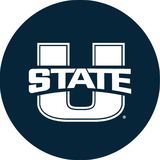
3 minute read
May in Moab
New LAEP/OPDD Field Course
If Utah is rich in public lands, it is equally rich in conflicts over them. These fights have been made manifest since the 60’s, stretching from the writings of eco-anarchist/ author/sage Edward Abbey to the speeches of Pres. Ronald Reagan to the bombast of Bureau of Reclamation chief Floyd Dominy. Of late, modern inheritors of the Sagebrush Rebellion, as captured by media coverage of Nevada rancher Cliven Bundy’s exploits, have brought the nation’s attention back to western public lands. Loggerheads over the same issues reached new proportions with the redrawing of Bears Ears National Monument’s boundaries by Pres. Trump’s administration.
Advertisement
The quandary that public lands present for the outdoor economy is felt in Utah as profoundly as any state, perhaps with the exception of Alaska. From the fight over Salt Lake City hosting the Outdoor Retailer Show, to the mass seasonal arrival/exodus of tourists, our state’s well-being is inextricably tied to this economy. And what the state’s economy cares about, designers care about, too.

This past May, Professors Sean Michale and Jake Powell joined with colleagues from across USU to teach a new 3-week field course in Moab focused on the complex dynamic surrounding public lands, gateway communities and the role of design in solving their dilemmas. A dozen students left Logan after Commencement, taking up residence in tents beneath the looming Wingate Sandstone cliffs of Spanish Valley. Based at ACT Campground, a sustainable facility featuring straw-bale construction, geothermal heating, rainwater harvesting and solar power generation, the group resided not a ¼ mile from USU’s future Moab campus.
Perhaps unique in the world, Moab offers a laboratory for studying the history of public lands and their impacts on communities. From national parks to uranium mining to the rise of adventure recreation, those who have studied, written about, and labored in Moab have tales to share. Our class set out to immerse students in the challenges that come with immense popularity, rapid growth and the boom-bust cycles of tourism and extractive use.

Highlights from the course were many and memorable. Prof. Mark Larese-Casanova (Dept. of Watershed Sciences) helped the students earn their Utah Master Naturalist “Deserts Certificate”, a program he developed. Prof. Jake Powell (LAEP, Extension) and Prof. Nate Trauntvein (Dept. of Kinesiology & Health Science) brought students face-toface with trails planning and construction, challenges and mandates of the NPS, BLM and USFS, and what the Bears Ears debate has meant for the newly incorporated town of Bluff. Outdoor Product Design & Development (OPDD) instructor Julie Lamara and Sean Michael coordinated interviews and tours with designers, artists, guides and nonprofits whose work supports the community and region.
In addition to canyoneering, hiking and mountain biking, the group took part in daily field testing of designs for outdoor products. Thanks to gear donations by a litany of brands, including Oboz Footwear, Mountain Khakis, Cotopaxi, Coalatree, Western Aloha, Nite Ize, Goal Zero, Infuze Hydration, and Klymit, the group was constantly in the mode of assessing and recording performance feedback to inform R&D teams in each company.

For design students, immersive learning holds a special opportunity that studio environments can’t replicate. Field trips and field-based classes as learning tools have a profound impact on how we grasp what is at stake when clashes arise between communities, cultures and ecosystems. In Moab we have a condensation of powerful forces, not the least of which are beauty, greed, poverty, race, tribalism, escapism and resource scarcity. In your face, tinged with adrenalin and desert dust, this slice of the canyon country is a teacher with more lessons to share than a lifetime of classes can cover. Of those lessons Wallace Stegner spoke often, and he speaks for us and many others when, in The Geography of Hope, he opined:
“Even when I can’t get to the back country, the thought of the colored deserts of southern Utah, or the reassurance that there are still stretches of prairie where the world can be instantaneously perceived as disk and bowl, and where the little but intensely important human being is exposed to the five directions and the thirty-six winds, is a positive consolation. The idea alone can sustain me. But as the wilderness areas are progressively exploited or ‘improved’, as the jeeps and bulldozers of uranium prospectors scar up the deserts and the roads are cut into the alpine timberlands, and as the remnants of unspoiled and natural world are progressively eroded, every such loss is a little death in me. In us.”










